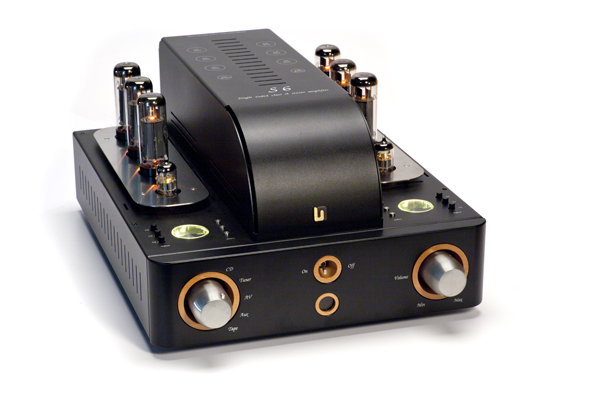 Perhaps the most enjoyable part of the hifi journey is discovering something new, especially on a heavily traveled road. It’s like discovering that cool coffee shop down the street, only to find that it’s been there for years and you just passed it by. The same could be said for the Unison Research S6 integrated amplifier, now in production for over a decade.
Perhaps the most enjoyable part of the hifi journey is discovering something new, especially on a heavily traveled road. It’s like discovering that cool coffee shop down the street, only to find that it’s been there for years and you just passed it by. The same could be said for the Unison Research S6 integrated amplifier, now in production for over a decade.
Moderately powered tube amplifiers based on the EL34/6CA7 output tubes have a legion of followers, myself included. I’ve owned many variations on the theme – from the legendary Marantz Model 8 and the Dynaco Stereo 70, to current production amplifiers from Conrad Johnson, Prima Luna, Octave and now the S6, reviewed here. I’ve even built a few in my younger days. While I’ve never met an EL34 amplifier I can’t enjoy, the folks at Unison or Conrad Johnson need not lose sleep over my making a career change anytime soon.
This pentode tube almost always produces a more mellow sound than the 6550/KT88, which usually delivers about twice as much output power per tube. The midrange of the EL34 is usually described as having a warmer, more romantic, tonally rich sound than many of the other output tubes, these lower powered amplifiers often render inner detail with more delicacy than most of the higher powered tube amplifiers. (Those thinking 6550’s can’t offer subtle inner detail, look no further than the Octave Jubilee monoblocks)
Design Differences
Regardless of the flavor you choose, amplifiers built around the EL34 tube rarely disappoint when it comes to midrange magic – and the Unison Research S6 is no slouch, yet it offers so much more.
Rather than a traditional push-pull configuration, the S6 employs three EL34 tubes per side, in parallel, driven in single-ended, Class-A triode mode. Mixing it up even further, the S6 features a combination of auto bias and adjustable bias, fine-tuning the operating point of the output tubes to perfection. With a pair of stylish meters and front panel adjustability, no tools are needed – meaning no tools to lose or misplace before a listening session. It’s wise to keep an eye on bias when your S6 is brand new, checking every few days. After about a month, the tubes settle in and a casual check now and then will suffice.
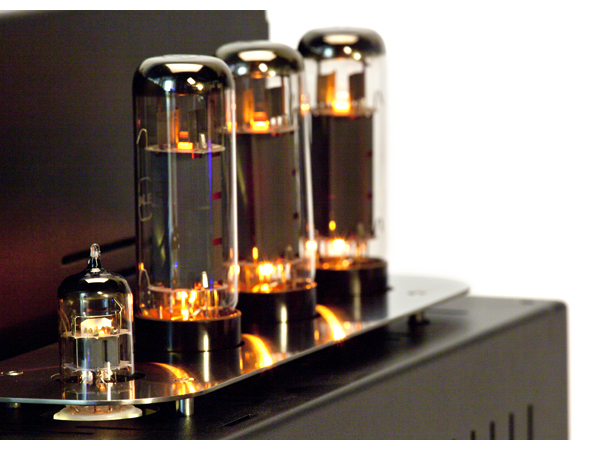 Standard issue tubes continue to improve and the current TungSol EL34’s supplied with the S6 proved close enough to the megabuck vintage EL34s on hand for comparison, that for all but the most fanatic and well heeled tube roller, you can rest assured the S6 sounds great right out of the box. The controlled biasing combined with not running the output tubes terribly hard should make for ample tube life. The 12AX7 driver tubes should last in the 10,000 hour range, making this an easy amplifier to live with long term.
Standard issue tubes continue to improve and the current TungSol EL34’s supplied with the S6 proved close enough to the megabuck vintage EL34s on hand for comparison, that for all but the most fanatic and well heeled tube roller, you can rest assured the S6 sounds great right out of the box. The controlled biasing combined with not running the output tubes terribly hard should make for ample tube life. The 12AX7 driver tubes should last in the 10,000 hour range, making this an easy amplifier to live with long term.
I did not spend a lot of time tube rolling, and swapping a few different EL-34s for the Tung Sols provided different sound but no overall improvement, so I submit the designers have done an excellent job voicing around current tubes. This amplifiers character can be changed more (and for less money) successfully merely substituting the two 12AX7s. A pair of Telefunkens or Bugle Boys will push the sound more towards the classic syrupy tube sound, while my favorite 12AX7, the EAT gives the S6 a lower noise floor and even more HF extension and less grain. Regardless of where you stand on tube rolling, the stock tubes are an excellent choice and should be fine for all but the most OCD tube roller.
The rest of the amplifier is straightforward, with volume, power and input selector on the front panel and five single ended inputs around back. Unison claims the S6 compatible with speakers in the 4-8 ohm range and provides a single set of output binding posts. Even the remote is unique, eschewing the standard kids meal remote that many products at this price feature, in favor of a more stylish remote with a wooden body. The S6 covers all the bases to be qualified as a premium product.
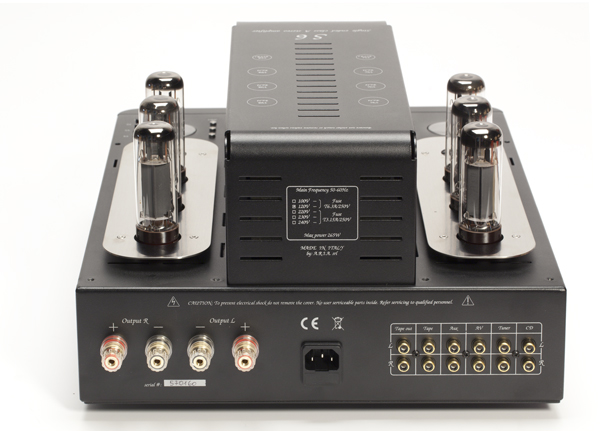 Mightier Than Its Power Rating Suggests
Mightier Than Its Power Rating Suggests
Audiophiles fixated on specs might pass on the S6 because of its modest power rating – yet its 35 watts per channel will suffice for all but the most inefficient speakers when playing at reasonable levels. This robust amplifier works well with all of the test speakers at our disposal, from the 85db Dynaudio Confidence C1s, to the 91 db Sonus Faber Ellipsa SEs.
The S6 produces some of the most lifelike bass response I’ve heard from an EL34 design – tonally rich, yet controlled throughout the range. Put to the full test with my reference GamuT S9 speakers that are only down 3db at 18hz, the Unison amp proved it could deliver major bass grunt when required. Whether I was playing Genesis, Snoop Dogg or Stanley Clarke, it was always easy to discern what was being played.
The S6 is also a perfect companion for my freshly refurbished Quad 57s. After a recent attack of audiophile nervosa, auditioning over a dozen amplifiers with the Quads, the S6 enchants with a mix of solid, well-controlled bass, a three dimensional soundfield and an extended high end – the latter the most tough to achieve with these speakers. If you happen to be a 57 owner, you know what I mean. The S6 did not have enough juice for the woefully inefficient Acoustat 1+1s, (81db) or the power hungry Magnepan 1.7s to more than a whisper, but that is a challenge no low power amplifier can pass.
However, the S6 is perfection for a listener in a modest room with a high quality pair of small speakers. In room two, (which is 13 x 15 feet) mating the S6 with either the Harbeth Compact 7ES-3s, Dynaudio C1’s or the Penaudio Cenyas makes for a symbiotic relationship far greater than the sum of its parts. Combining the S6s liquid midrange with the imaging of these speakers in a small room makes for an immersive listening experience that’s tough to argue with. It’s almost like a giant pair of Stax headphones.
That’s just my take on the bass and imaging. The true beauty of the Unison Research S6 is the smooth, yet defined midrange and the ease that it transitions into the upper registers. Cymbals sound reach out and touch them real and solo vocalists are divine. A quick spin of the latest Doors remasters from Acoustic Sounds on 45 rpm vinyl reveal layer upon layer of vocal and instrumental texture in a way that most vintage gear does not. The S6 follows the musical pace well, producing texture and tonal contrast without sounding warm, syrupy and slow. A perfect match of old and new school design ethos.
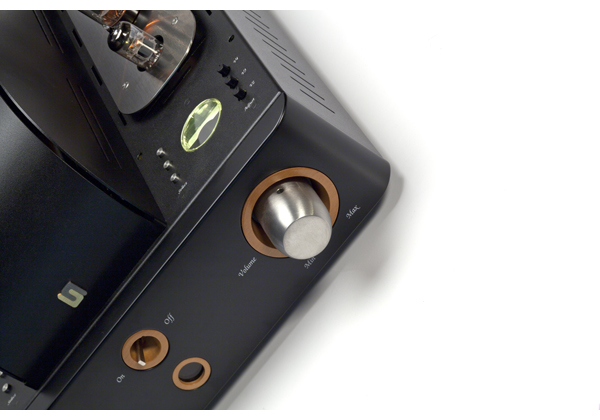 Simplicity, Form and Function
Simplicity, Form and Function
I love the simplicity that a great integrated amplifier provides. Add a source or two, your favorite pair of speakers and call it a day. $4,895 spent elsewhere will no doubt buy you more power, but you’ll be hard pressed to find the finesse, both electronically and aesthetically that the S6 offers. This amplifier is more than just a nice tube integrated; it is a work of audio art. It’s an amplifier that should be put on a pedestal with a wonderful painting above it.
Unison supplies tube cages for the S6 to protect kids, cats and pups, but the amplifier is so much more attractive with them removed, it seems a shame to have to use them.
If 30-35 watts per channel is enough to rock your world and you’ve been itching for something special, audition the Unison Research S6. I think you will agree that this is a unique product.
Unison Research S6 Integrated Amplifier
MSRP: $4,895
en.unisonresearch.com (mfr.)
www.colleencardasimports.com (US distributor)
Peripherals
Analog Source: AVID Volvere SP/Durand Talea arm/Miyajima Kansui
Phonostage: Zesto Andros PS1
Digital Source: dCS Paganini Stack, Sooloos Control 15
Speakers: Harbeth Compact 7SE-3, Penaudio Cenya, Dynaudio Confidence C1 II
Cable: Cardas Clear
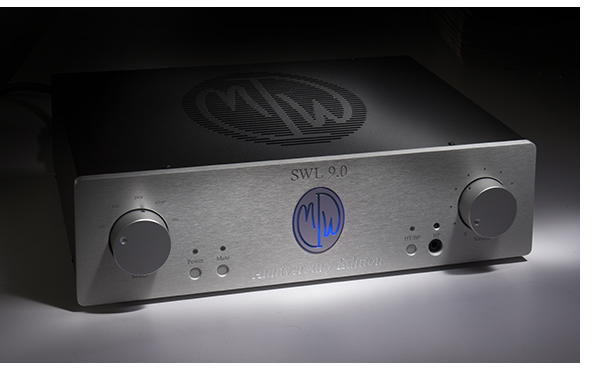 13 years ago, Dan Wright was building his first product, the SWL 9.0, named after his son and I had just begun my career of reviewing audio gear for The Absolute Sound.
13 years ago, Dan Wright was building his first product, the SWL 9.0, named after his son and I had just begun my career of reviewing audio gear for The Absolute Sound.


 Perhaps the most enjoyable part of the hifi journey is discovering something new, especially on a heavily traveled road. It’s like discovering that cool coffee shop down the street, only to find that it’s been there for years and you just passed it by. The same could be said for the Unison Research S6 integrated amplifier, now in production for over a decade.
Perhaps the most enjoyable part of the hifi journey is discovering something new, especially on a heavily traveled road. It’s like discovering that cool coffee shop down the street, only to find that it’s been there for years and you just passed it by. The same could be said for the Unison Research S6 integrated amplifier, now in production for over a decade. Standard issue tubes continue to improve and the current TungSol EL34’s supplied with the S6 proved close enough to the megabuck vintage EL34s on hand for comparison, that for all but the most fanatic and well heeled tube roller, you can rest assured the S6 sounds great right out of the box. The controlled biasing combined with not running the output tubes terribly hard should make for ample tube life. The 12AX7 driver tubes should last in the 10,000 hour range, making this an easy amplifier to live with long term.
Standard issue tubes continue to improve and the current TungSol EL34’s supplied with the S6 proved close enough to the megabuck vintage EL34s on hand for comparison, that for all but the most fanatic and well heeled tube roller, you can rest assured the S6 sounds great right out of the box. The controlled biasing combined with not running the output tubes terribly hard should make for ample tube life. The 12AX7 driver tubes should last in the 10,000 hour range, making this an easy amplifier to live with long term. Mightier Than Its Power Rating Suggests
Mightier Than Its Power Rating Suggests Simplicity, Form and Function
Simplicity, Form and Function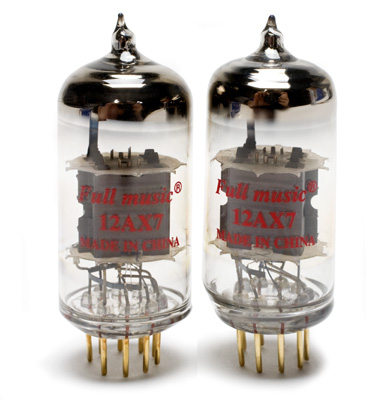
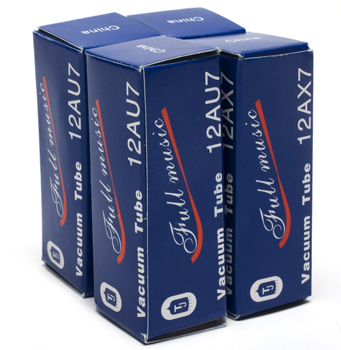 Second test: Driver
Second test: Driver










